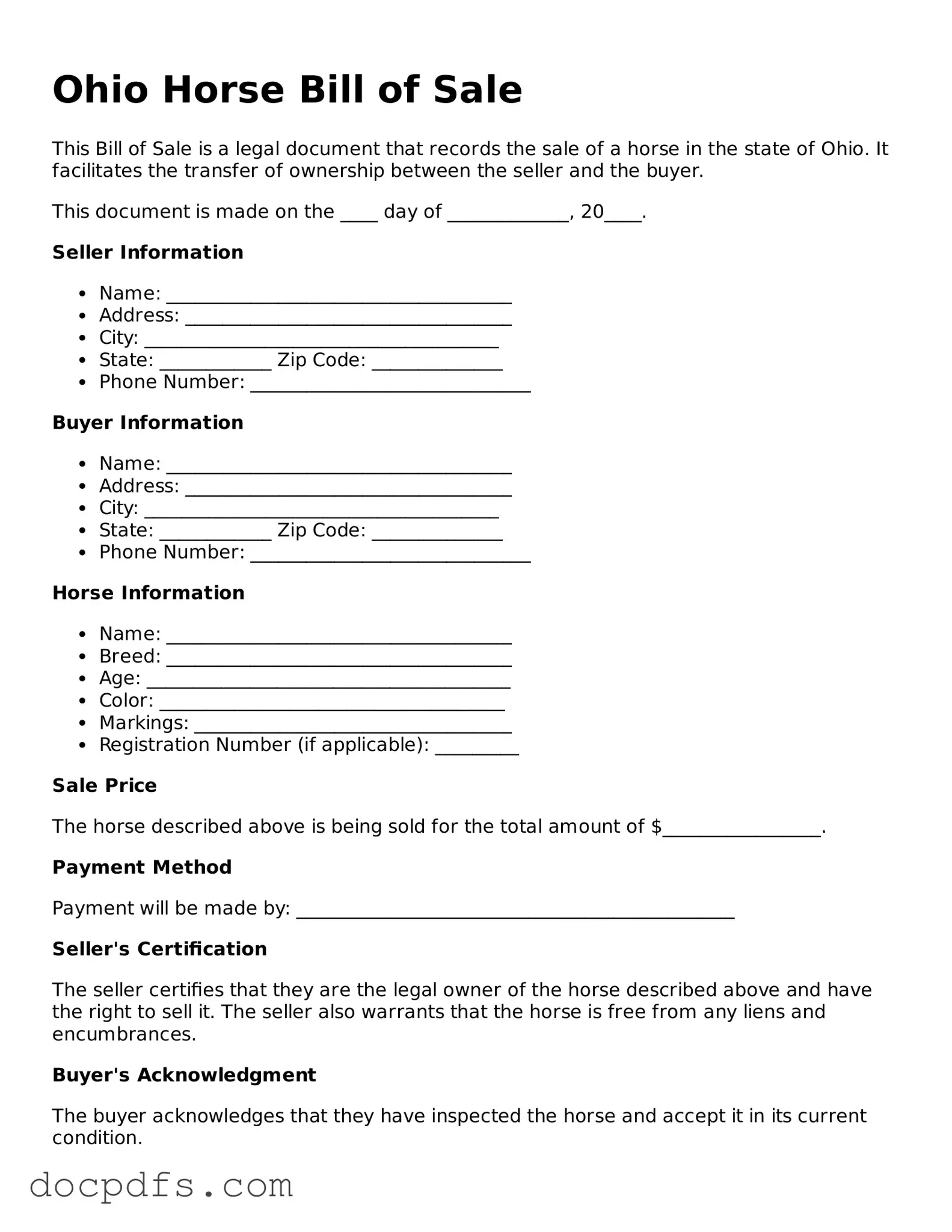Free Ohio Horse Bill of Sale Form
The Ohio Horse Bill of Sale form serves as a legal document that records the transfer of ownership of a horse from one party to another. This form outlines essential details, including the horse's description, sale price, and the identities of both the seller and buyer. Understanding this document is crucial for ensuring a smooth transaction and protecting the interests of all parties involved.
Open Horse Bill of Sale Editor Now
